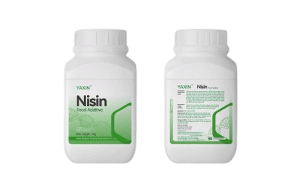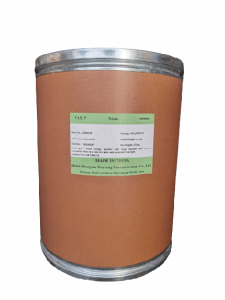
 CONTACT
CONTACT
- Linkman:Linda Yao
- Tel: +8618231198596
- Email:linda.yao@dcpharma.cn
- Linkman:CHARLES.WANG
- Department:Overseas
- Tel: 0086 0311-85537378 0086 0311-85539701
Imported High Quality Natamycin,Improve Stability
TIME:2025-03-12The following are some methods to improve the stability of natamycin lactose preparations in a high-temperature environment:
I. Optimize the Formula
Select the appropriate type of lactose: Different types of lactose, such as α-lactose, β-lactose, and their hydrates, have different physical and chemical properties. β-lactose has relatively low hygroscopicity, which may help improve the stability of the preparation in a high-temperature and high-humidity environment. Through experimental comparisons, the type of lactose that can best ensure the stability of natamycin can be selected.
Add stabilizers: Some additives can enhance the stability of natamycin lactose preparations. For example, adding an appropriate amount of antioxidants such as vitamin E and vitamin C can prevent natamycin from undergoing oxidation reactions at high temperatures. Adding some hydrophilic polymers, such as polyvinylpyrrolidone (PVP) and hydroxypropyl methylcellulose (HPMC), can form a protective film on the surface of natamycin particles, reducing the impact of high temperature on the drug. At the same time, it can improve the cohesiveness and formability of the preparation.
Adjust the pH value: The stability of natamycin varies at different pH values. By adding suitable buffers to the preparation, the pH value can be adjusted to a range where natamycin is relatively stable. Generally speaking, natamycin has better stability in the pH range of 3-7.
II. Improve the Preparation Process
Control the drying conditions: In the preparation process of the preparation, the drying process has a great impact on stability. Low-temperature drying or freeze-drying technology should be adopted to avoid the degradation of natamycin caused by high-temperature drying. For example, freeze-drying can remove moisture at low temperatures, maximally preserve the activity and stability of natamycin, and enable the preparation to form a porous structure, which is beneficial to improving the dissolution performance of the drug.
Optimize the mixing process: Ensure that natamycin is fully and uniformly mixed with lactose and other excipients. Appropriate mixing equipment and process parameters can be used. For example, using a three-dimensional mixer for mixing can make the materials move in multiple directions, resulting in a more uniform mixing effect, avoiding excessively high or low local concentrations of natamycin, and thus improving the overall stability of the preparation.
Adopt microencapsulation technology: Using microencapsulation technology to encapsulate natamycin in tiny capsule materials can isolate the drug from the external high-temperature environment. Select suitable capsule materials, such as ethyl cellulose, sodium alginate, etc. Prepare natamycin microcapsules through processes such as spray drying and coacervation, and then make them into preparations together with lactose and other excipients, which can effectively improve its stability at high temperatures.
III. Packaging and Storage
Select suitable packaging materials: Select packaging materials with good barrier properties, such as aluminum foil composite bags and glass containers, which can effectively block the effects of factors such as air, moisture, and light on the preparation. Aluminum foil composite bags have excellent moisture-proof and oxygen-isolating properties, which can prevent natamycin from reducing its stability due to absorbing moisture or coming into contact with oxygen during the storage process.
Control the storage conditions: Even with various stabilization measures taken, the storage conditions are still crucial. Store the natamycin lactose preparation in a cool and dry environment, and avoid direct sunlight. If possible, refrigerated storage can be used, but attention should be paid to preventing the preparation from absorbing moisture or undergoing other physical changes during the refrigeration process.
- Tel:+8618231198596
- Whatsapp:18231198596
- Chat With Skype







